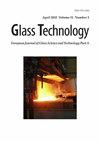人工智能和机器学习在交通运输中的作用和关键应用
IF 0.3
4区 材料科学
Q4 MATERIALS SCIENCE, CERAMICS
Glass Technology-European Journal of Glass Science and Technology Part a
Pub Date : 2020-12-31
DOI:10.47672/ejt.632
引用次数: 1
摘要
目的:本文的主要目标是研究人工智能和机器学习的意义及其对运输业务的影响。方法论:这个假设是对重要的机器学习计算及其在大数据领域应用的调查。本文试图展示从当今时代可用的大量信息中删除重要数据的必要性,并记录了不同的机器学习策略,可以用来分离这些信息,以鼓励更好的交通应用动态。研究结果:本文介绍了用于改进智能交通系统(ITS)的不同人工智能(AI)方法的调查。具体而言,本文根据其应用的主要领域将其分为三个主要领域:车辆控制、交通控制与预测、道路安全与事故预测。这一研究的后果表明,各种人工智能方法的组合从各方面来看都是有前途的,特别是在监督和调查交通运输中产生的大量数据方面本文章由计算机程序翻译,如有差异,请以英文原文为准。
Role and Key Applications of Artificial Intelligence & Machine Learning in Transportation
Purpose: The main target of this paper was to examine the significance of Artificial Intelligence and Machine Learning and their effect on the transportation business.
Methodology: This hypothesis was a survey of the significant machine learning calculations and their applications in the field of big data. This paper try to attempt to exhibit the need to remove significant data from the huge measure of enormous information as traffic data available in this day and age and recorded diverse machine learning strategies that can be utilized to separate this information needed to encourage better dynamic for transportation applications.
Findings: This paper present an investigation of the different Artificial Intelligence (AI) methods that have been actualized to improve Intelligent Transportation Systems (ITS). Specifically, this paper assembled them into three main territories relying upon the main field where they were applied: Vehicle control, Traffic control and prediction, and Road security and accident prediction. The aftereffects of this examination uncover that the mix of various AI methodologies is by all accounts promising, particularly to oversee and investigate the huge measure of data created in transportation
求助全文
通过发布文献求助,成功后即可免费获取论文全文。
去求助
来源期刊
CiteScore
0.30
自引率
0.00%
发文量
0
审稿时长
>12 weeks
期刊介绍:
The Journal of the Society of Glass Technology was published between 1917 and 1959. There were four or six issues per year depending on economic circumstances of the Society and the country. Each issue contains Proceedings, Transactions, Abstracts, News and Reviews, and Advertisements, all thesesections were numbered separately. The bound volumes collected these pages into separate sections, dropping the adverts. There is a list of Council members and Officers of the Society and earlier volumes also had lists of personal and company members.
JSGT was divided into Part A Glass Technology and Part B Physics and Chemistry of Glasses in 1960.

 求助内容:
求助内容: 应助结果提醒方式:
应助结果提醒方式:


